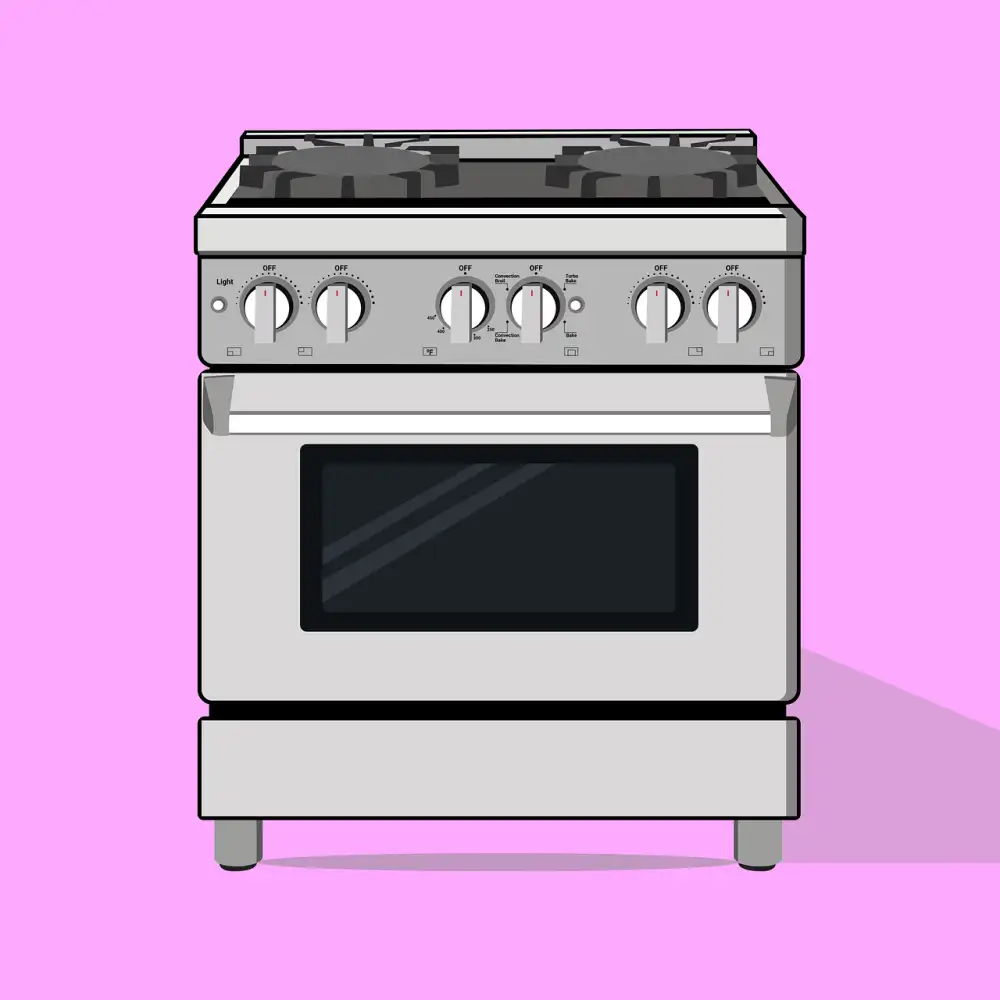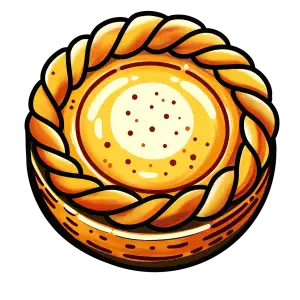Master the Art of Cooking with a Convection Oven: A Step-by-Step Guide for Home Chefs

- Understanding the Basics of Convection Cooking
- Preparing Your Convection Oven for Use
- Adjusting Cooking Times and Temperatures
- Properly Loading and Arranging Food in the Oven
- Utilizing the Convection Setting for Baking
- Using the Convection Setting for Roasting and Broiling
- Cleaning and Maintaining Your Convection Oven
- Troubleshooting Common Issues with Convection Ovens
Convection ovens are a game-changer in the world of cooking. Unlike conventional ovens, which rely on radiant heat, convection ovens use a fan to circulate hot air evenly throughout the cooking chamber. This results in faster and more even cooking, with food that is perfectly browned and crispy on the outside while remaining moist and tender on the inside. Whether you're a seasoned chef or a home cook looking to elevate your culinary skills, mastering the art of cooking with a convection oven will open up a whole new world of possibilities in your kitchen. In this guide, we will take you through everything you need to know about using a convection oven, from understanding the basics of convection cooking to troubleshooting common issues. So let's get started and unlock the full potential of your convection oven!
Understanding the Basics of Convection Cooking
Convection cooking is a method that utilizes the circulation of hot air to cook food more efficiently and evenly. Unlike traditional ovens, which rely on radiant heat, convection ovens have a fan that helps distribute the heat throughout the oven cavity.
The circulating hot air in a convection oven speeds up the cooking process, allowing food to cook faster than in a conventional oven. This can be especially beneficial when you're short on time or need to prepare multiple dishes at once.
Additionally, convection cooking provides more even heat distribution, resulting in better browning and crispness. It's perfect for achieving that golden crust on breads and pastries or getting a perfectly roasted chicken with crispy skin.
To ensure successful convection cooking, it's important to understand how it affects cooking times and temperatures. Because the hot air is constantly moving around the food, it can cause moisture loss and evaporation. As a result, recipes may require slight adjustments in both time and temperature.
In general, when using a convection oven, you should lower the recommended temperature by about 25 degrees Fahrenheit (or 15 degrees Celsius) compared to what is stated in traditional recipes. Additionally, you may need to reduce cooking times by approximately 25%.
It's also worth noting that because of the increased air circulation, delicate foods like soufflés or custards may not be suitable for convection cooking as they can deflate or become unevenly cooked.
By understanding these basics of convection cooking, you'll be able to harness the power of your convection oven and elevate your culinary creations to new heights.
Preparing Your Convection Oven for Use
Before you start cooking with your convection oven, it is important to properly prepare it for use. Here are a few steps to follow:
- Read the Manual: Familiarize yourself with the manufacturer's instructions and guidelines for your specific convection oven model. This will help you understand its features and functions.
- Clean the Interior: Remove any debris or residue from the interior of the oven. Wipe down the walls, racks, and trays using warm soapy water or a mild cleaning solution. Rinse thoroughly and dry before use.
- Check the Seals: Inspect the door seals to ensure they are intact and in good condition. If there are any cracks or gaps, replace them to maintain proper heat circulation within the oven.
- Adjust Shelves: Most convection ovens come with adjustable shelves or racks. Position them according to your cooking needs, making sure there is enough space between each shelf for proper air circulation.
- Preheat the Oven: Preheating is essential in convection cooking as it helps achieve even heat distribution throughout the oven cavity. Set your desired temperature and allow the oven to preheat fully before placing food inside.
By following these steps, you can ensure that your convection oven is ready for use and will provide optimal results in all your culinary endeavors.
Adjusting Cooking Times and Temperatures
One of the key advantages of cooking with a convection oven is its ability to cook food faster and more evenly. However, this means that you may need to adjust your cooking times and temperatures compared to traditional ovens.
To start, reduce the cooking temperature by about 25 degrees Fahrenheit (or 15 degrees Celsius) when using a convection oven. This is because the fan in the oven helps circulate hot air, resulting in faster and more efficient cooking.
Next, you'll want to decrease the cooking time by roughly 25% compared to what the recipe suggests for a conventional oven. Keep an eye on your food as it cooks, as it may be ready sooner than expected.
It's important to note that these adjustments are not set in stone and may vary depending on your specific convection oven model. It's always a good idea to consult your oven's manual or do some trial and error with different recipes until you find the perfect cooking times and temperatures for your favorite dishes.
By mastering the art of adjusting cooking times and temperatures in a convection oven, you'll be able to achieve perfectly cooked meals every time. So don't be afraid to experiment and fine-tune your techniques until you become a true convection oven maestro!
Properly Loading and Arranging Food in the Oven
When using a convection oven, it's important to know how to load and arrange your food for optimal results. Here are some tips to help you master this art:
- Use shallow, flat pans: Convection cooking relies on the circulation of hot air, so using shallow and flat pans allows for better airflow around the food. Avoid using deep or covered dishes that can obstruct the air movement.
- Leave space between items: To ensure even cooking, leave space between each item in the oven. This allows the hot air to circulate freely around each piece of food, resulting in consistent browning and crispiness.
- Place larger items on lower racks: When cooking multiple items of different sizes, place larger ones on lower racks and smaller ones on higher racks. This helps prevent overcooking or burning of smaller items due to their proximity to the heat source.
- Rotate pans halfway through cooking: To promote even browning, rotate pans halfway through the cooking process. This ensures that all sides of the food receive equal exposure to the hot air circulating in the oven.
- Avoid overcrowding: Overcrowding the oven can hinder proper airflow and lead to uneven cooking. If you have a large batch of food to cook, consider using multiple racks or cook in batches instead.
By following these guidelines, you'll be able to maximize the efficiency of your convection oven and achieve deliciously cooked meals every time.
Utilizing the Convection Setting for Baking
When it comes to baking, a convection oven can be a game-changer. The convection setting circulates hot air evenly throughout the oven, resulting in perfectly baked goods with a crisp exterior and moist interior.
To utilize the convection setting for baking, start by preheating your oven to the recommended temperature. Then, simply place your baking dish or tray on the center rack of the oven. It's important to leave enough space between each item to allow for proper airflow.
Because convection ovens cook faster than traditional ovens, it's crucial to adjust your baking time accordingly. As a general rule of thumb, reduce the suggested cooking time by about 25%. However, keep an eye on your baked goods as they may finish even sooner.
Another tip is to lower the temperature by about 25 degrees Fahrenheit when using the convection setting. This will prevent over-browning and ensure even cooking throughout.
Remember to rotate your pans halfway through the baking process to ensure uniform browning. This is especially important when baking multiple trays at once.
With the convection setting, you can achieve bakery-quality results at home. From flaky pastries to golden cookies, this feature will elevate your baking game and impress your family and friends.
Experiment with different recipes and keep track of any adjustments you make for future reference. Soon enough, you'll become a master at utilizing the convection setting for all your baking needs.
Using the Convection Setting for Roasting and Broiling
Roasting and broiling are popular cooking methods that can be easily enhanced with a convection oven. When using the convection setting for roasting, make sure to use a shallow roasting pan to allow the hot air to circulate around the food evenly. This will result in a beautifully browned exterior and juicy interior.
To achieve the best results when broiling, position the rack closest to the heating element. The convection setting will ensure that the heat is distributed evenly, giving your food a deliciously crispy finish. Keep a close eye on your food while broiling as it can cook quickly.
Remember to adjust your cooking times and temperatures when using the convection setting for roasting and broiling. The hot air circulation may reduce cooking times, so it's important to monitor your food closely to avoid overcooking.
With practice, you'll soon master the art of roasting and broiling with your convection oven, creating delectable dishes that will delight your senses.
Cleaning and Maintaining Your Convection Oven
Cleaning and maintaining your convection oven is essential for its longevity and optimal performance. After each use, allow the oven to cool down before starting the cleaning process. Start by removing any loose food particles or spills using a damp cloth or sponge. For stubborn stains, mix a solution of warm water and mild dish soap and gently scrub the affected areas. Avoid using abrasive cleaners or scouring pads as they can damage the oven's interior. Remember to also clean the oven racks and trays separately using warm soapy water. Lastly, regularly check and clean the oven's ventilation system to ensure proper airflow. By following these simple cleaning steps, you can keep your convection oven in pristine condition for years to come.
Troubleshooting Common Issues with Convection Ovens
While convection ovens offer many benefits, they can sometimes present challenges. Here are some common issues you may encounter and how to troubleshoot them:
1. Uneven Cooking: If your food is cooking unevenly, it could be due to improper food placement or overcrowding. Make sure to leave enough space between items for proper air circulation.
2. Excessive Browning: If your food is browning too quickly or becoming burnt, try reducing the temperature by 25 degrees Fahrenheit and/or decreasing the cooking time slightly.
3. Inconsistent Baking: If your baked goods are turning out unevenly cooked or not rising properly, check that you are using the correct oven rack position and that the oven is preheated adequately.
4. Fan Noise: Convection ovens can be noisier than traditional ovens due to the fan circulating hot air. However, if you notice an unusually loud or rattling noise, it may indicate a problem with the fan motor that requires professional attention.
5. Temperature Inaccuracy: If you suspect that your convection oven's temperature is inaccurate, use an oven thermometer to verify its accuracy. You may need to recalibrate or have it serviced if there is a significant discrepancy.
6. Steam Buildup: During baking, steam can accumulate inside the oven and cause condensation on the glass door. To prevent this, crack open the door slightly during cooking or use a vented lid when necessary.
By addressing these common issues and following proper usage guidelines, you can ensure optimal performance from your convection oven and achieve delicious results every time you cook!
In conclusion, mastering the art of cooking with a convection oven can elevate your culinary skills to new heights. By understanding the basics of convection cooking, properly preparing and loading food in the oven, and utilizing the convection setting for baking, roasting, and broiling, you can achieve delicious and evenly cooked dishes every time. Remember to clean and maintain your convection oven regularly to ensure its optimal performance. With practice and experimentation, you will become a confident home chef who can delight your senses with the culinary artistry of food.
Published: 19. 12. 2023
Category: Home



